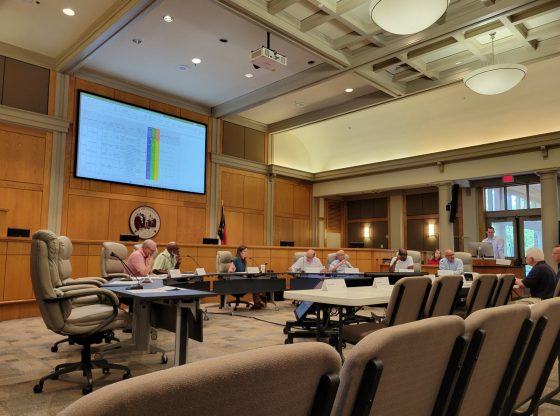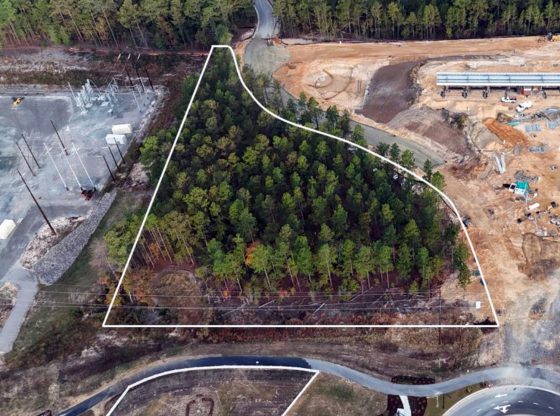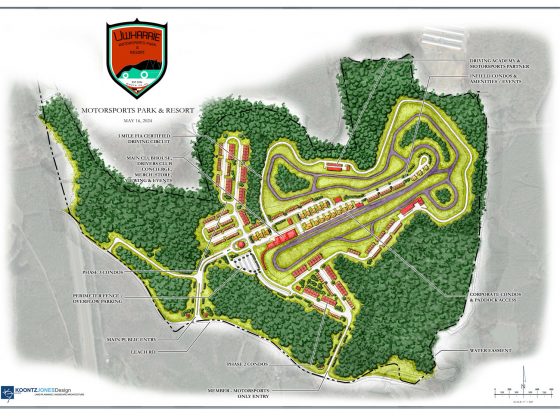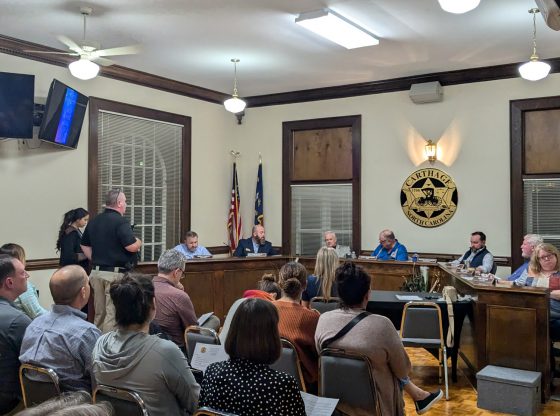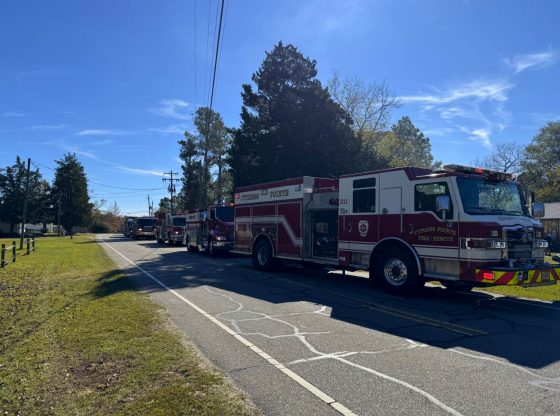The Sandhills Metropolitan Planning Organization (SMPO) convened Wednesday morning at the Assembly Hall in Pinehurst to discuss projects involving Moore County roads, determine their feasibility, and decide on the path forward.
The SMPO’s mission is to “foster cooperation among the local governments in the region to plan and develop a multimodal transportation system that meets the mobility needs of the area’s residents and serves the region’s economy.”
Karyl Fuller, principal planner and rural planner organization director at Central Pines Regional Council, was present to answer questions surrounding the ongoing development of a traffic model for Moore County. This model, expected to be ready by the end of the year, is crucial for understanding future traffic patterns and identifying potential issues.
The boards of several Moore County municipalities have been looking forward to viewing this model for years, as County Commissioner Frank Quis noted. “It’s information that a lot of people could use, and I know the general public would find it fascinating,” said Quis. “I hope you all can drill down on some of the modeling data that the Department of Transportation has and share it with the public and update the plan if it’s warranted.”
Moving forward, the board discussed proposed and active projects for both railways and highways.
Railway Update
Though railway projects were only briefly touched upon, Fuller confirmed that the N.C. DOT is upgrading rail infrastructure to support new intercity passenger service from Raleigh to Southern Pines. The project includes necessary infrastructure, stations, and passenger equipment and would begin service with three round trips per day from Raleigh to Hamlet. The estimated budget is $417,376,000.
DOT Prioritization
The DOT prioritization process assesses projects across three tiers: Statewide Mobility, Regional Impact, and Division Needs. To decide which projects should receive attention, the board is given “points” to allocate to them. They are given 400 points in total, and no more than 100 points can be given to any one project. The board is hoping to give four projects 100 points each rather than spreading the points any thinner.
The board ranked the projects in order of scale, importance, and budget.
Aberdeen Mayor Robert Farrell spoke out on behalf of Aberdeen, believing that infrastructure changes to Roseland Road should receive a high priority. The proposed plan involves building a new bridge over U.S. 1 to mitigate traffic hazards.
“Roseland Road was never intended to be a thru-way, and getting another bridge across the railroad tracks would help,” said Farrell. “I would suggest if you’re not familiar with Roseland Road to be careful because people are using it to avoid Pinehurst. That intersection [with U.S. 1] is dangerous.”
Though the board has not yet decided which projects to allocate points to, some of the projects from the list that were not further discussed at the meeting include:
*Widening U.S. 15-501 in the two-lane stretch from Laurinburg to Aberdeen. The plan would add intermittent turning/passing lanes rather than expanding the entire highway to four lanes, which is not feasible. This is the most costly plan involving roadways, with an estimated cost of $48,700,000.
*Another proposed expansion involves upgrading a stretch of U.S. 1 spanning from Midland Road to Camp Easter Road, with the intent to “convert to superstreet intersections along [the] corridor.” The estimated cost is $29,200,000.
*Improving intersections and adding turning lanes to both Rattlesnake Road and Gun Club Drive in Pinehurst, which are municipal roadways that are not maintained by DOT. This project is estimated to cost $6,899,000.
*Converting conventional intersections to roundabouts, totaling around $12 million.
*Creating more pedestrian accommodations.
Debt & Deficits
Additionally, the presentation revealed financial constraints, including a $450 million deficit described as being “in the red.” Fuller noted that the financial shortfall is a recurring issue, with hopes for future funding still uncertain.
Pinehurst Mayor Patrick Pizzella questioned what Moore County could do to lessen this debt but was informed that much of the deficit comes from Moore County sharing a larger division with Charlotte.
Pizzella’s questioning also led the board to discover that DOT has changed inflation “from 1% to 5%” in recent years.
Feature photo: The SMPO board discusses road projects at a monthly meeting at the Village of Pinehurst’s Assembly Hall on June 19.
~Article and photo by Sandhills Sentinel Assistant Editor Abegail Murphy.


